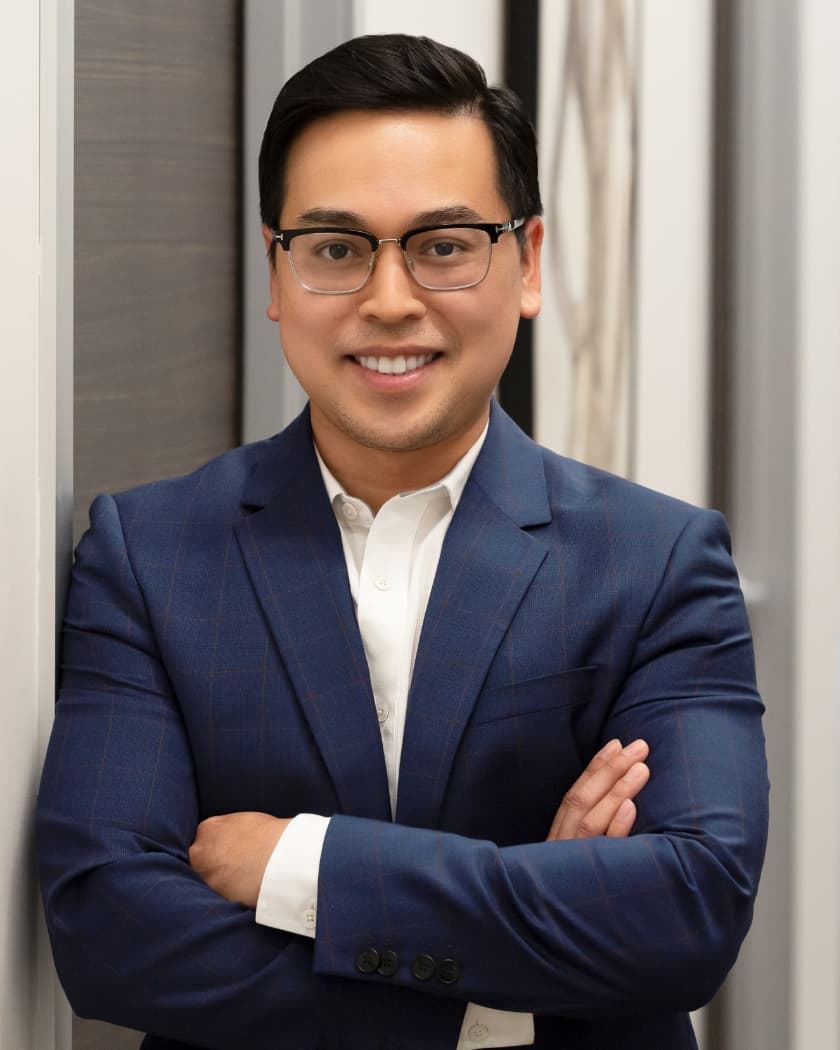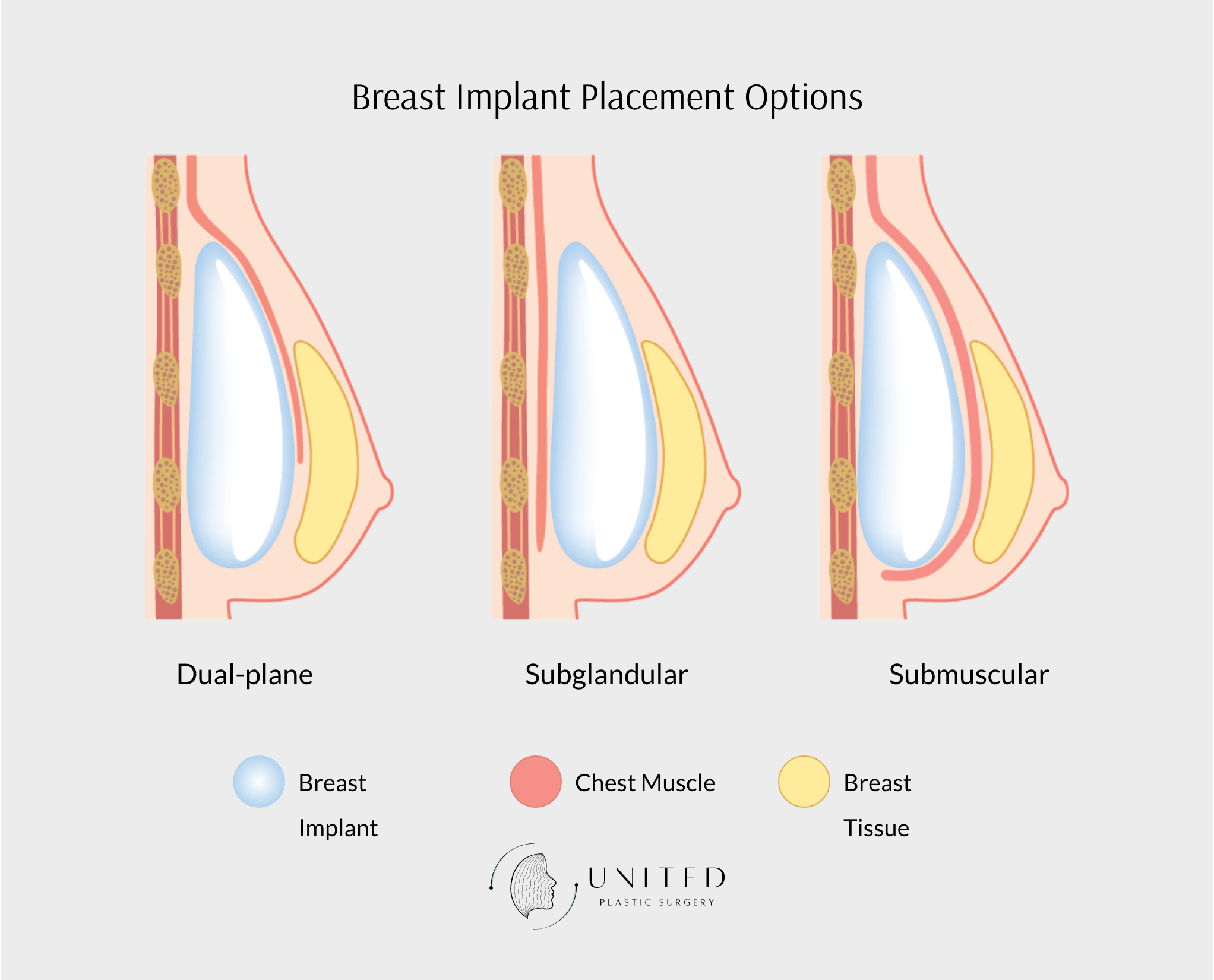Premier Breast Augmentation Destination
Learn about breast augmentation benefits, surgery, and implant choices. Review patient photos, cost details, and our recovery timeline.
Newport Beach
400 Newport Center Drive, Suite 100
Newport Beach, CA 92660
(949) 760-0600
Mon–Fri: 8 a.m.–5 p.m.
Get Directions
Temecula
31150 Temecula Pkwy, Suite 103
Temecula, CA 92592
(951) 414-3530
Mon–Fri: 8 a.m.–5 p.m. | Closed 12 p.m.–1 p.m.
Get Directions
Breast augmentation can help you feel more proportioned, feminine, and confident. At United Plastic Surgery, our board-certified plastic surgeon, Dr. Phuong Pham, performs breast augmentation (colloquially called a boob job) in Newport Beach or Temecula, using the latest breast implants, fat grafting, or both. Dr. Pham delivers one-on-one care, unsurpassed safety, and natural-looking results.
Breast augmentation, also called breast enlargement, is a plastic surgery procedure that enlarges the breasts with silicone or saline breast implants. As a highly trained breast augmentation specialist, Dr. Pham can also use fat grafting to enhance the breasts, either with or without implants. If breast sagging is your main concern, a breast lift may be a more suitable procedure. Many women choose a combination breast augmentation and lift to enhance breast size and shape with one surgery.
Women choose breast enlargement in Newport Beach and Temecula for a variety of personal reasons, including:
At United Plastic Surgery, breast augmentation procedures start at $8,000 and vary with your choice of implants and the specifics of the surgery. The price will be higher if you have other procedures performed simultaneously. Dr. Pham will give you a personalized quote at your consultation. We offer financing options for interested patients.
Dr. Pham is an experienced, highly trained board-certified plastic surgeon dedicated to superior patient care and surgical outcomes. He is committed to each patient from the initial consult to surgery to a personal phone call after surgery and beyond.

Dr. Pham typically uses an inframammary incision (placed along the breast crease) because it gives him direct access for implant placement, does not restrict implant choice, and conceals the resulting scar. If you prefer, he can use a periareolar incision (around the lower edge of the areola) or a transaxillary incision (in the armpit).
After the incision, Dr. Pham creates a space behind the breast tissue, called the pocket, to hold the breast implant. He typically uses dual-plane implant placement for the most natural-looking results. Here is a comparison of the options:

You can choose either silicone gel or saline breast implants; both types are safe, have a flexible silicone outer shell, and are FDA-approved. The best type for you depends on various factors, including personal preference.
| CONSIDERATION | SALINE IMPLANTS | SILICONE IMPLANTS |
| Patient age | At least 18 | At least 22 |
| Incision options | All options | Inframammary or periareolar |
| Results | Firmer than silicone, may ripple | Feel soft, doughy, natural |
| Price | Less expensive than silicone | More expensive than saline |
| Leak or rupture | Immediately noticeable | Detected with imaging |
Dr. Pham will walk you through the following additional choices used to select your breast implants:
Considering implant material, size, shape, and profile, Dr. Pham will help you select the breast implants best suited for your goals.
Instead of using implants to make the breasts fuller, Dr. Pham can use your body’s excess fat. Natural breast augmentation, also called fat grafting breast augmentation, at our practice in Newport Beach and Temecula requires the following three steps:
Fat grafting is best for patients who want a slight increase in breast size. Dr. Pham can also use it to conceal the edge of the implants in thin patients or enhance specific areas of the breast, such as the upper pole or cleavage, in combination with breast implants.
Many women combine breast augmentation with other plastic surgery procedures. Popular choices include:
During your one-on-one consultation, Dr. Pham will examine you, discuss the changes you’d like to make, and create a personalized surgical plan. You will have plenty of time to ask questions and address your concerns.
Dr. Pham usually performs breast augmentation as outpatient surgery at one of our private surgery centers. You are put under general anesthesia, and he applies a local anesthetic to control pain after the surgery.
After making the incisions, Dr. Pham creates a pocket for each breast implant. He then inserts the implants, fills saline implants, and ensures the breasts look similar in size and shape. Once Dr. Pham is happy with the result, he closes the incisions with dissolvable sutures, covers them with medical tape, and wraps the breasts with a supportive surgical bra.
Dr. Pham will give you specific post-op instructions to follow when you arrive home from surgery. Tips for an optimal recovery include:
While experiences vary, patients typically reach these recovery milestones along the following timeline:
Request a complimentary consultation using our online form or call to meet with Dr. Phuong Pham.